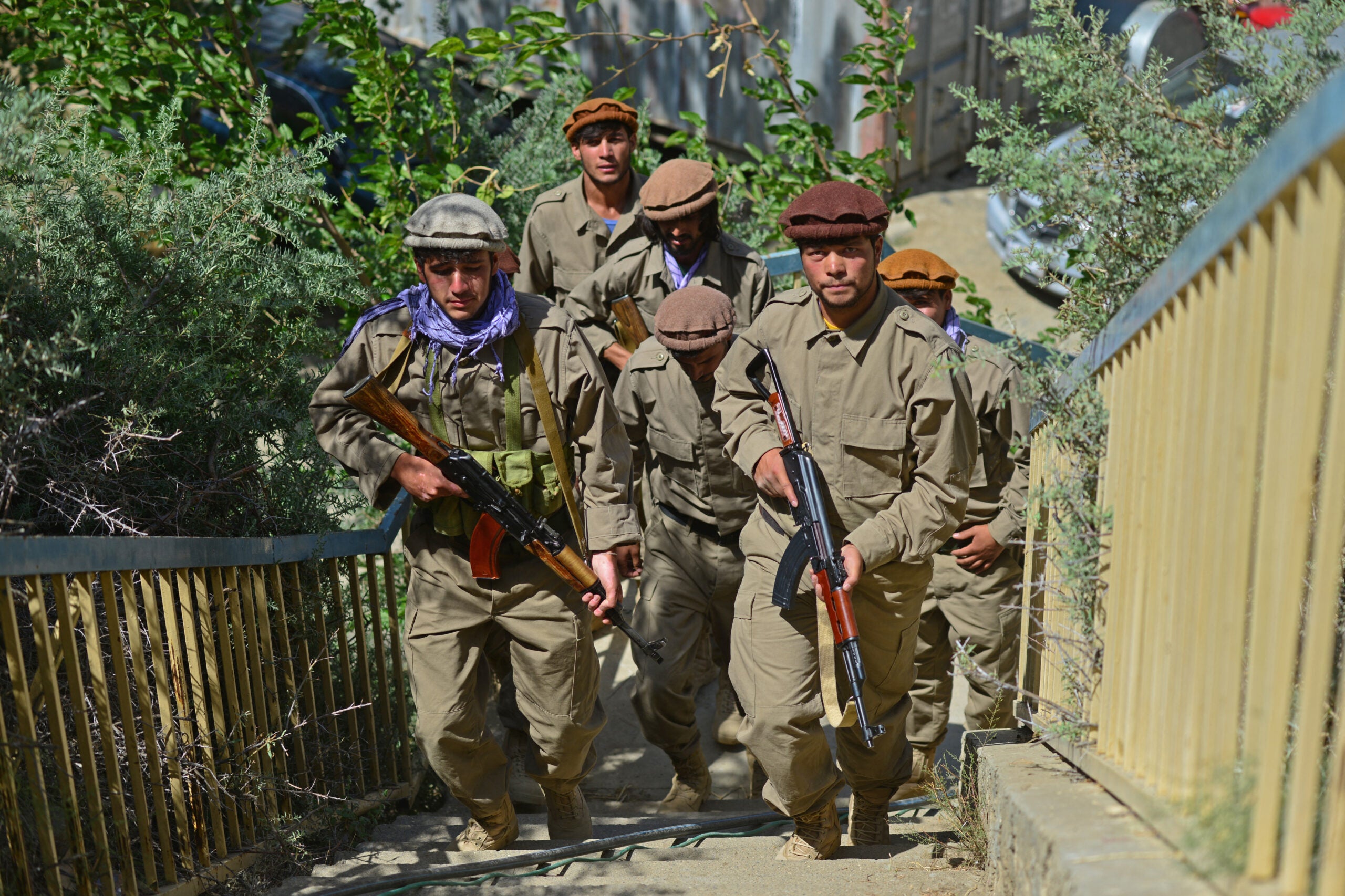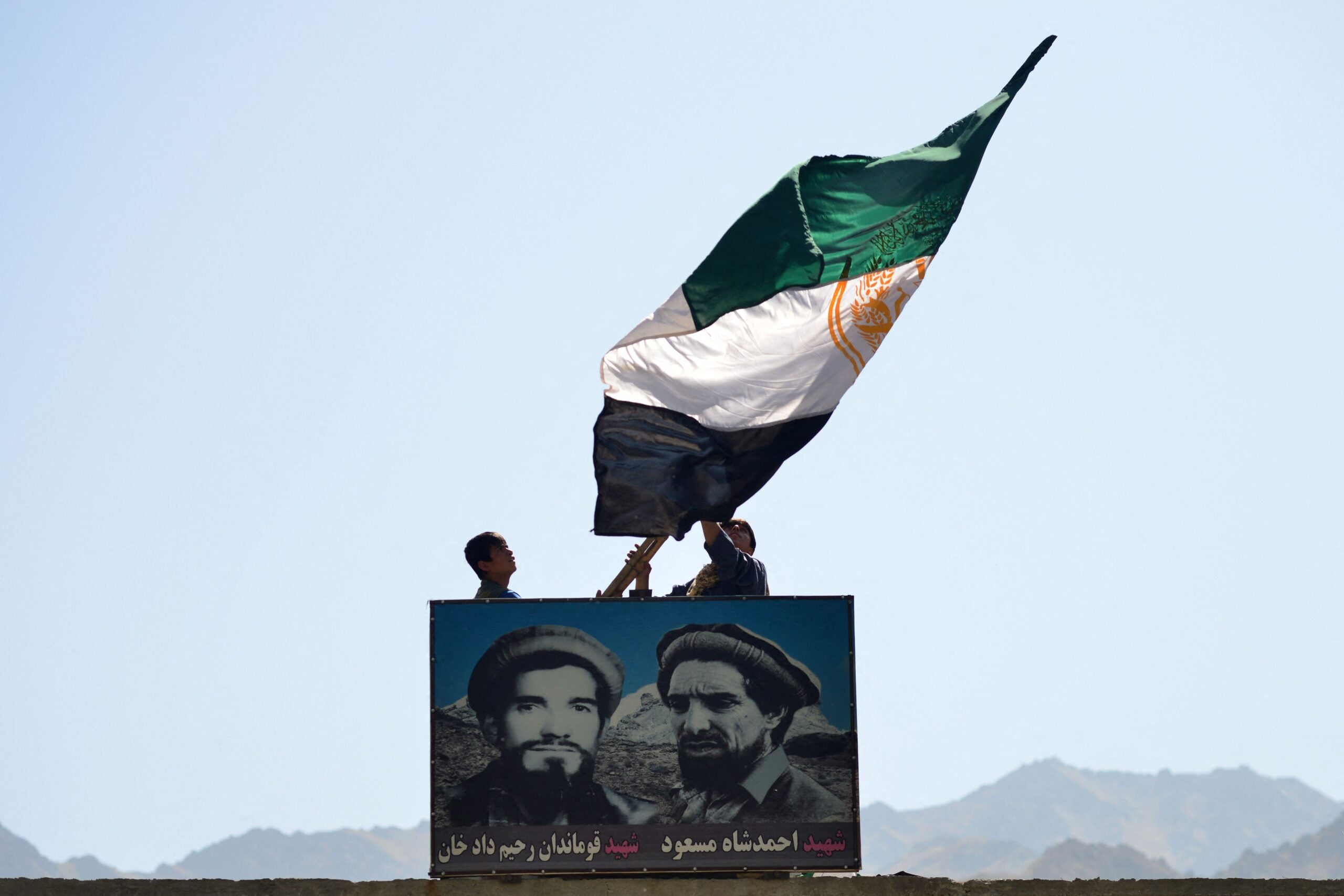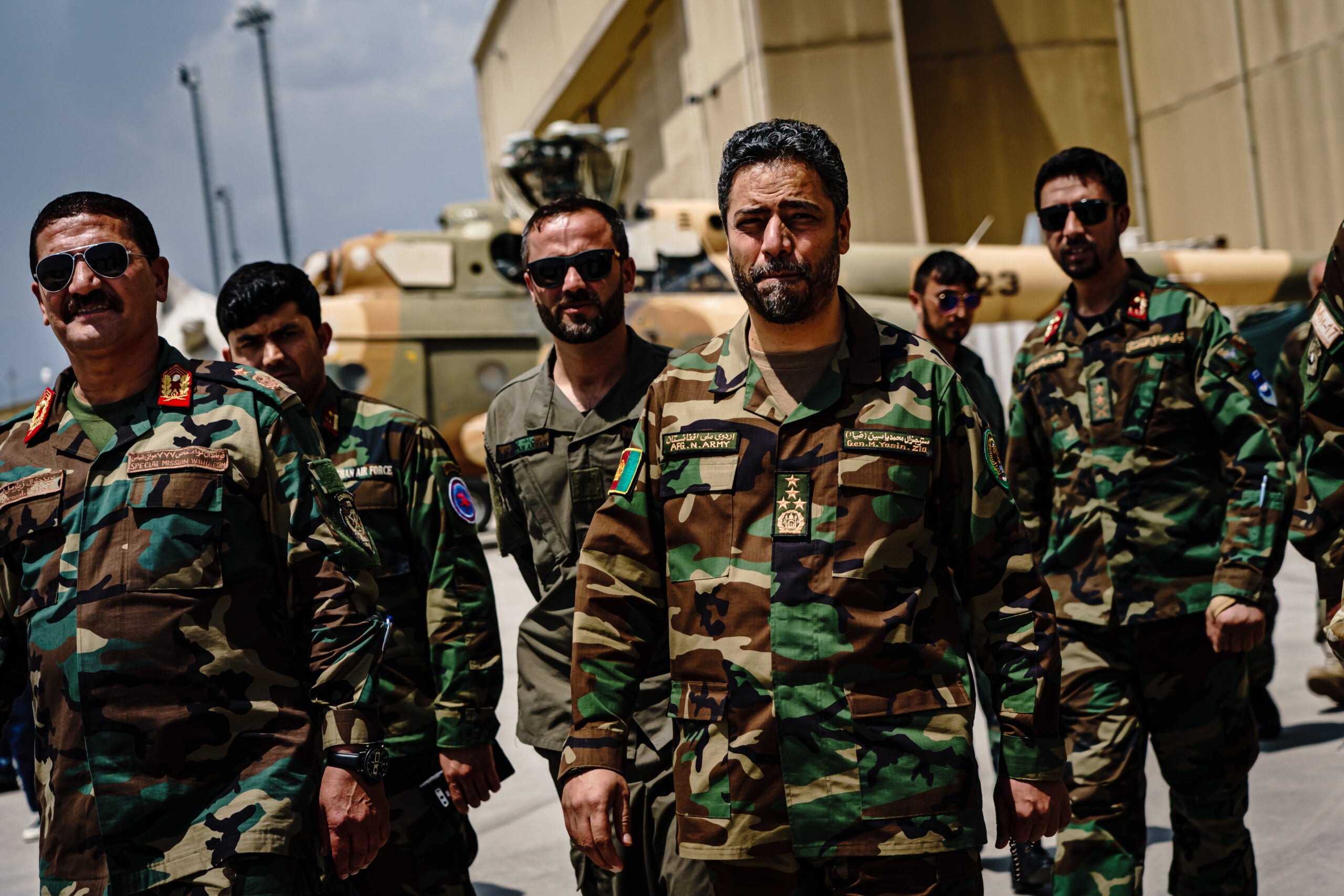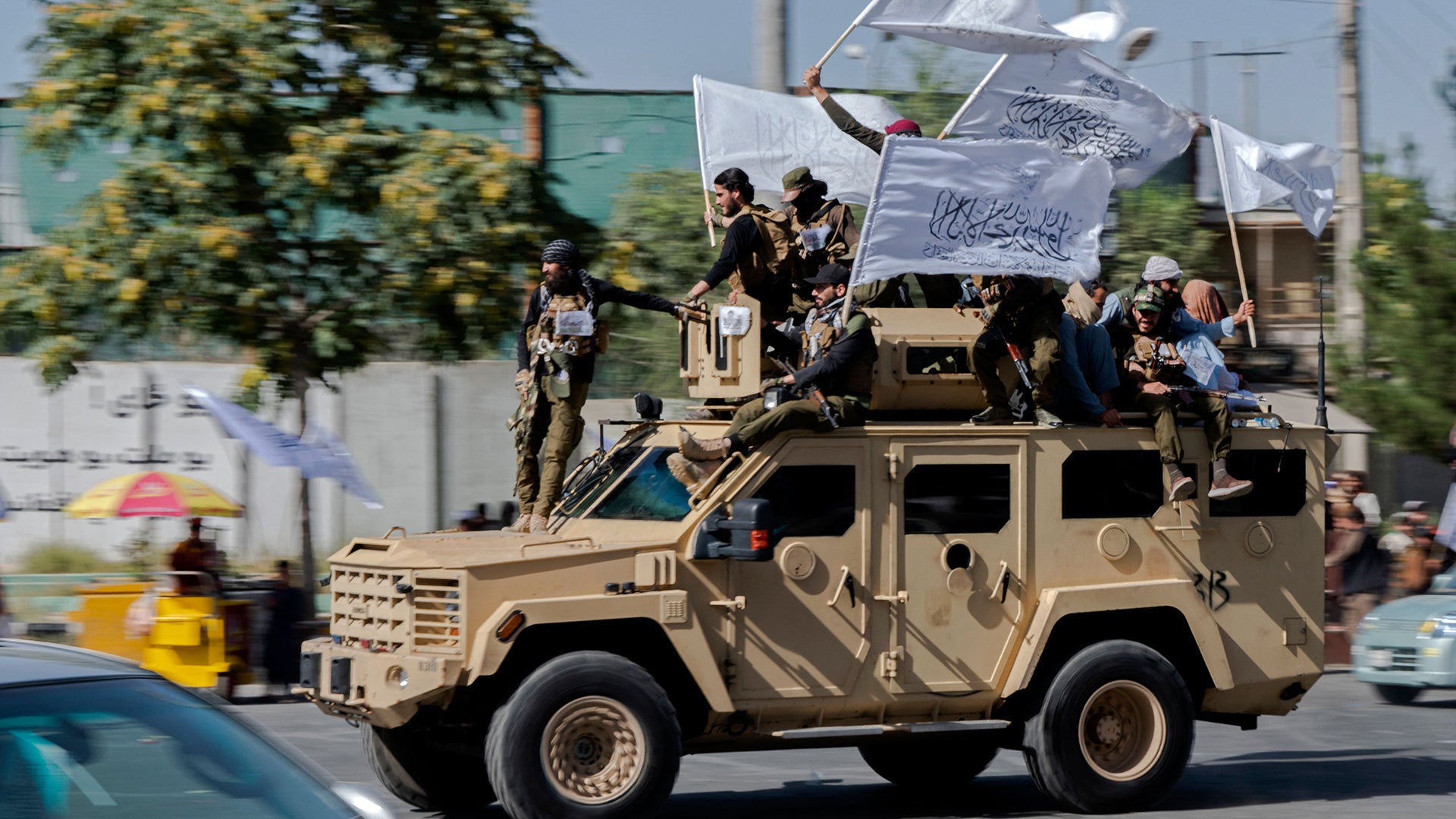(Alors, les américains sont repartis pour un tour en Afghanistan ? note de rené)
What is happening inside the Afghan resistance?
“The only reason Afghans aren’t standing up against the Taliban right now is the perception that the Taliban are supported by the U.S.”
BY JEFF SCHOGOL | PUBLISHED AUG 17, 2023 4:16 PM EDT Task and Purpose
After the United States left Afghanistan two years ago, grainy videos circulated online of resistance fighters coming together in austere regions of Afghanistan to fight the Taliban.
Today, the Taliban has control over the entire country, but they continue to face armed opposition from groups such as the National Resistance Front of Afghanistan, NRF, and Afghanistan Freedom Front, AFF. These remaining resistance groups have made little demonstrable progress though.
Since the Taliban took power in Afghanistan in August 2021, the country has faced political, economic, and humanitarian crises, and Afghan women have been banned from public life as part of a policy of gender apartheid, said Ali Maisam Nazary, head of foreign relations for the NRF.
“Basically, they’ve created the conditions of their own demise,” Nazary told Task & Purpose. “What we assess is that the Taliban’s grip on power is weakening, and we see the signs that this grip isn’t going to hold control of the whole country. In the next year or two they are going to start retreating from many parts of the country, and a void and vacuum are going to be created in those parts of the country.”
Subscribe to Task & Purpose Today. Get the latest military news and culture in your inbox daily.
Formed from the remnants of Afghanistan’s former security forces, the NRF is led by Ahmad Massoud, son of the legendary Mujahideen leader Ahmad Shah Massoud, who fought both the Soviets and the Taliban before he was killed by al-Qaida two days before the Sept. 11, 2001 terrorist attacks.

One advantage that Ahmad Massoud has as the NRF’s leader is that he is not connected to any of the corruption in the former Afghan republic, so he can become a symbol of resistance, Nazary said.
Nazary claimed the NRF has roughly 5,000 members — including fighters and people who provide intelligence logistical support — and it now operates in 14 Afghan provinces. Task & Purpose was unable to independently verify that information.
“We started our fighting season this year from Kabul, our first operation was within Kabul city,” Nazary said. “We’ve been having operations on a daily basis — if not on a daily basis, every other day — in the east and northern Afghanistan, in places in central Afghanistan. As every day passes, the geography of the resistance is growing.”
So far, Afghan resistance groups have not done well on the battlefield. Ahmad Massoud left Afghanistan after the Taliban moved into the Panjshir Valley in September 2021, although fighting in the area continues. The following year, the Taliban killed Malik Khan, an NRF commander, in September 2022; and this spring the Taliban launched a successful operation against the AFF that killed one of its senior commanders, Akmal Amir.
Nazary said the NRF conducted a strategic withdrawal from the main Panjshir Valley to side valleys because the group had changed its strategy from waging a conventional war to a guerilla campaign. The NRF now has bases in remote parts of the Hindu-Kush that the Taliban cannot access, he said.
“We are pursuing an unconventional war at this phase, so our main objective isn’t to liberate and sustain control over districts and provinces,” Nazary said. “Our objective during the phase is to exhaust the enemy, to challenge the enemy both in the battlefield and to challenge their narrative, and to strengthen ourselves and garner as much resources as we can, and to recruit as many people as we can in order to Phase 2, which is liberating and sustaining control over whole districts and provinces.”
Resistance groups like the NRF are trying to wage war against the Taliban without any help from the United States.
The U.S. government does not support armed conflict within Afghanistan, a State Department spokesperson told Task & Purpose.
“The country was at war for 44 years,” the spokesperson said. “We do not want to see a return to conflict in Afghanistan and we hear from Afghans that they don’t either.”

Nazary confirmed that the NRF is not receiving material support from any foreign countries. Instead, the group has captured or bought weapons from the Taliban.
However, the NRF will need foreign assistance when the Taliban eventually collapses to avoid the Islamic State group, al-Qaida, and other terrorist groups from seizing power in Afghanistan.
“Our message to the international community is that the conflict in Afghanistan isn’t an isolated one,” Nazary said. “We are not fighting an internal war. We are not fighting a civil war. We’re continuing the Global War on Terrorism. The NRF is not only fighting against the Taliban, we’re fighting against all terrorist groups, whether it’s al-Qaida, whether it’s ISIS, whether it’s a regional terrorist group. If we want to fill that void and vacuum when it does come about, we will need the support of the international community.”
The NRF and AFF have shown that they can fight together against the Taliban, but they also face a series of challenges that continue to hinder their ability to operate successfully, said Natiq Malikzada, a political analyst, human rights activist, and journalist covering mainly northern regions of Afghanistan.
One major obstacle is that, unlike the Northern Alliance that fought the Taliban after it first took power in 1996, the current resistance groups do not have lines of communication into other countries, Malikzada told Task & Purpose.

“Both the NRF and the AFF are currently suffering due to the lack of a communication route with a neighboring country,” Malikzada said. “They’ve faced significant challenges and setbacks because of this limitation, and several times their members have been captured and arbitrarily executed while secretly crossing the border or trying to reinforce their forces in different parts.”
Without strategic links to the outside world, Afghan resistance groups face a shortage of money and military equipment that has made it harder for them to mobilize support among ethnic groups that are opposed to the Taliban, he said. That makes it difficult for such groups to launch large-scale operations.
In some cases, the NRF has sent volunteers back home because they did not have weapons for new recruits, Malikzada said.
Meanwhile, Afghan resistance groups have not received much coverage from the international media because the Taliban control the flow of information outside the country and foreign journalists do not have access to parts of Afghanistan where anti-Taliban groups operate, said Habiba Marhoon, a human rights advocate and founder of the Liberty Coalition, a non-profit group that raises awareness about human rights in Afghanistan.

The U.S. military’s abrupt withdrawal from Afghanistan in 2021 has also caused many Afghans to conclude the Taliban enjoys support from the United States, Marhoon told Task & Purpose.
“The only reason Afghans aren’t standing up against the Taliban right now is the perception that the Taliban are supported by the U.S.,” Marhoon said.
That sentiment was echoed by former Afghan Gen. Yasin Zia, head of the AFF, who told Task & Purpose, “The Taliban did not overthrow the government, the U.S. handed over the government to the Taliban.”
Zia, Afghanistan’s former army chief of staff and deputy defense minister, declined a Task & Purpose request for an interview.
The Taliban does not view the Afghan resistance groups as a serious threat to its rule, said Mohammad Suhail Shaheen, head of the Taliban’s political office in Doha. Shaheen claimed that the fall of the former government shows that the Afghan people have already rejected groups such as the NRF and AFF.

“The government of the Islamic Emirate has now writ all over the country,” Shaheen told Task & Purpose. “Various economic projects have been launched and the poverty is diminishing with the passage of time. Still the common people are facing problems because of sanctions. They are being punished because of political motives. I hope this comes to an end as soon as possible. The people are being punished because of political motives.”
The fact that Afghan resistance groups are often led by members of the former Afghan government can be a liability that prevents them from gaining support from abroad, said Bill Roggio, a senior fellow with the Foundation for Defense of Democracies think tank in Washington, D.C.
“These are individuals who had their chance to change the situation, and I think many people within the United States and in the international community are having a difficult time rallying behind them,” Roggio told Task & Purpose.
Further complicating matters, the various anti-Taliban resistance groups are squabbling among themselves for primacy, preventing them from organizing into one viable group, Roggio said.
The NRF and AFF are currently conducting harassing attacks that do not directly threaten the Taliban’s rule, he said.
“In order for the resistance to gain traction, it would have to organize, take control of territory in some remote areas, and get foreign support,” Roggio said. “They need weapons. They need communications equipment, food, and money in order to buy supplies and things of that nature. The Taliban was able to persevere for 20 years because of support from Pakistan and Iran. The current Afghan resistance does not have that support at this time and it’s unlikely that they’ll have any real success without it.”
The latest on Task & Purpose
- Air Force Combat Controllers might scrap dive school during training pipeline
- Army chief warrant officer 5 receives Soldier’s Medal for saving people from house fire
- 4 US Navy destroyers respond to Russian and Chinese ships near Alaska
- Chinese troops vow they are willing to die in fight for Taiwan
- ‘He was willing to sacrifice himself:’ Army veteran killed in Ukraine

Aucun commentaire:
Enregistrer un commentaire